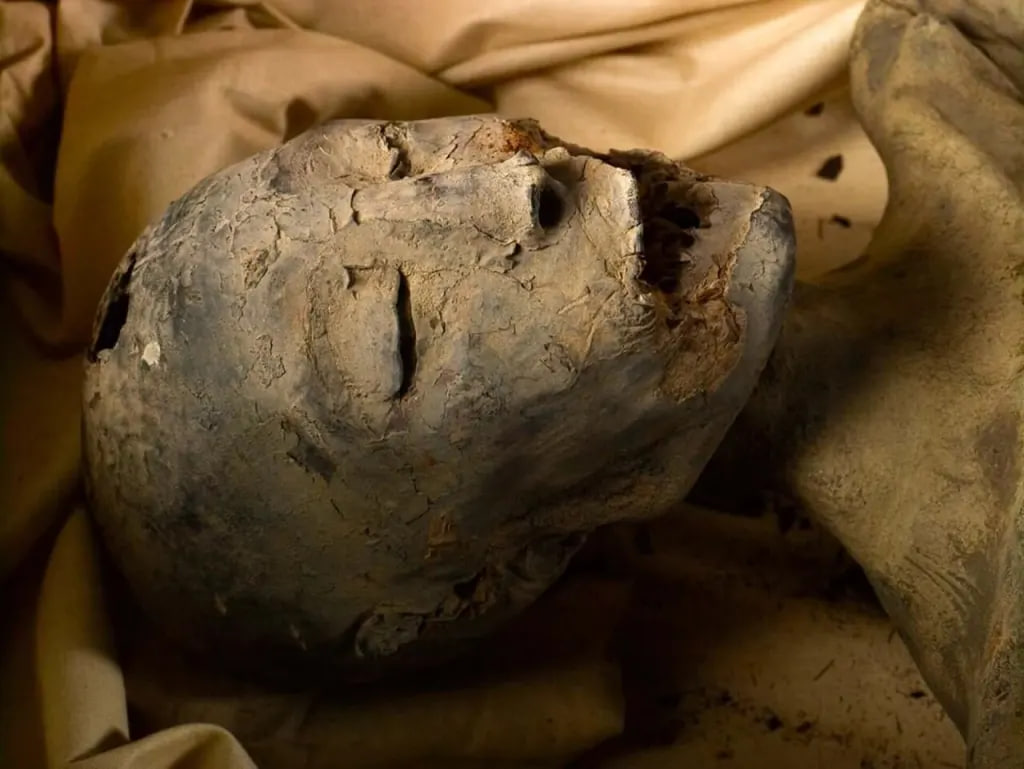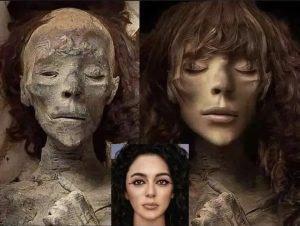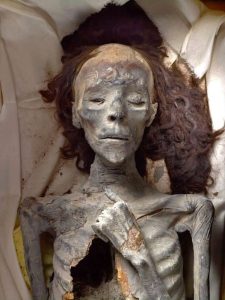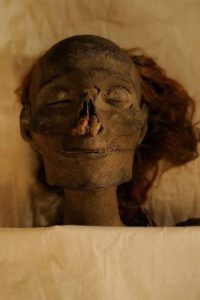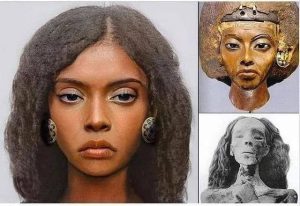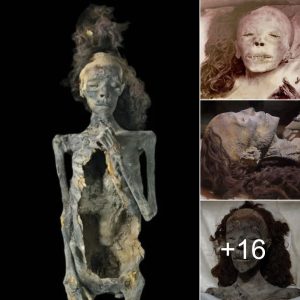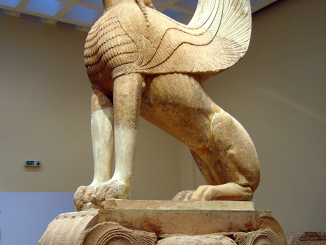Tutankhamun’s mother (The Younger Lady)
Modern analysis of “The Younger Lady” suggests she was between 25 and 35 when she died, and she measures at 158cm, making her approximately, 5ft2inches tall. Recent C.T. scans also showcased that “The Younger Lady”, like her son Tutankhamun has unerupted wisdom teeth, which is also another indicator of her dying as a young adult.
“The Younger Lady” is most notable for what appears to be a wound upon her jawline, as of yet, it has never been officially determined whether this injury was caused in life (a possible fatal blow) or during a tomb robbery.
She also has a large cavity upon her torso. However, the Egyptian Mummy Project seem fairly certain the wounds were made prior to death, and therefore her cause of death.
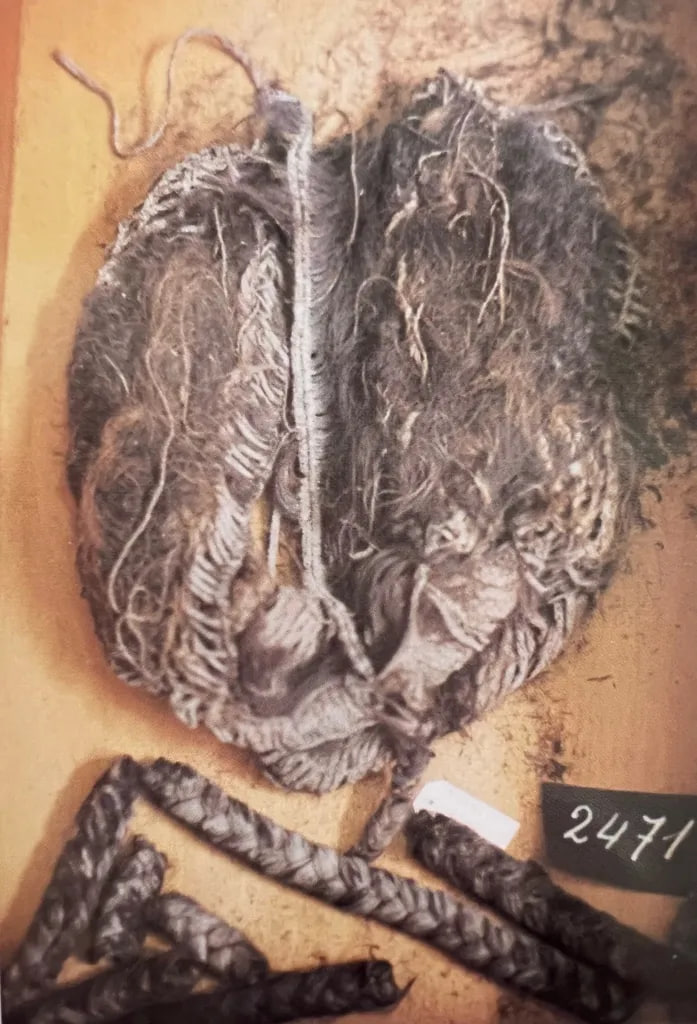
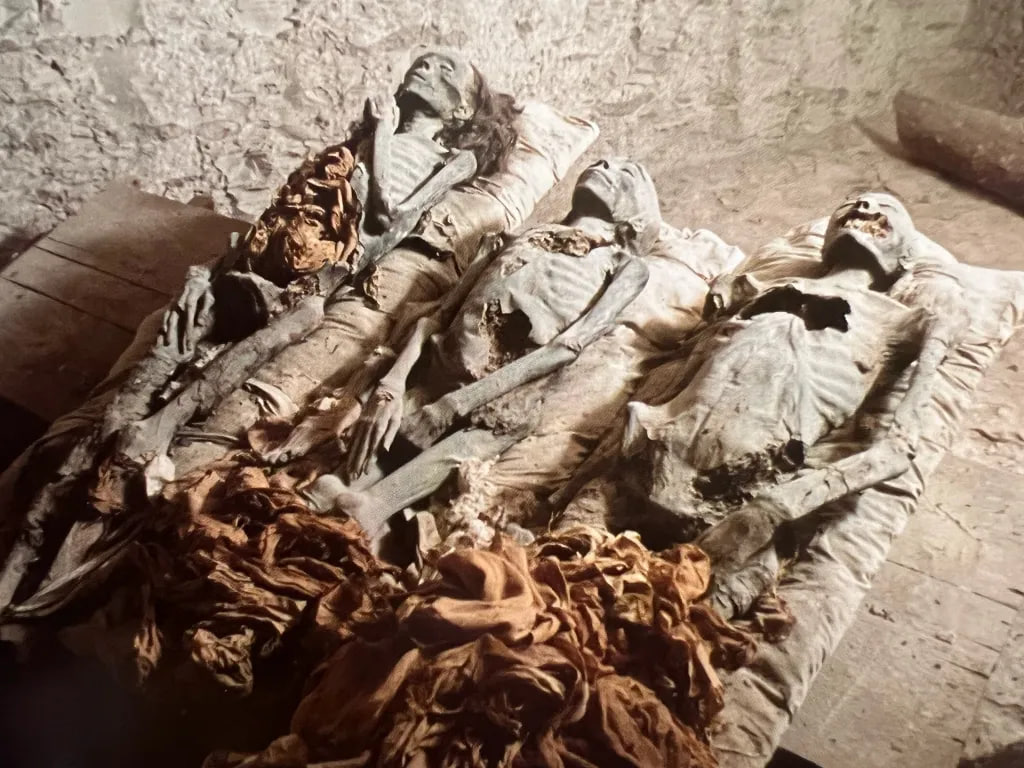
“The Younger Lady”, was found in tomb KV35 by archaeologist Victor Loret in 1898. She was laid out beside the mummy of her mother (Tiye) and the mummy of a young boy, possibly the young Prince Thutmose, a son of Amenhotep III and his Great Royal Wife Tiye.
For a long while the mummy of Great Royal Wife Tiye simply went by “The Elder Lady”, until officially identified by a lock of hair buried within Tutankhamun’s tomb, labelled as the hair of his grandmother. This hair was a definite match for the natural hair upon Tiye’s mummy.
Various scholars and Egyptology lovers have theories of the identity of “The Younger Lady”, identifying her as a secondary wife of Akhenaten, Kiya, and some even propose she is Nefertiti herself, however…these are simply theories.
As of yet “The Younger Lady” has not been formally identified, other than her biological relation to the mummies of her mother (Tiye), father (Amenhotep III), brother (KV55) and son (Tutankhamun).

Howard Carter’s 1922 discovery of the intact tomb of Tutankhamun is often hailed as the greatest of all Egyptian discoveries. But the complex, interlocking family relationships between the boy king and his ancestors was better understood thanks to the huge amount of information revealed by Loret’s find at KV35 and the discovery at Deir el-Bahri.
Taken together, the successive discoveries in Egypt in the late 1800s and early 1900s helped flesh out the lives and relationships of the powerful royal protagonists of that distant time.

In 2018, French paleoartist Élisabeth Daynès recreated The Younger Lady’s likeness for an episode entitled “Great Women of Ancient Egypt” for the television series Expedition Unknown.
Daynès is an acclaimed paleoartist, who has previously won the John J. Lazendorf Paleoart prize, and she reconstructed Tutankhamun’s likeness in 2005 for the National Geographic.
The work of a paleoartist consists of scientific evidence to produce the likeness of pre-historic animals, or historic man.
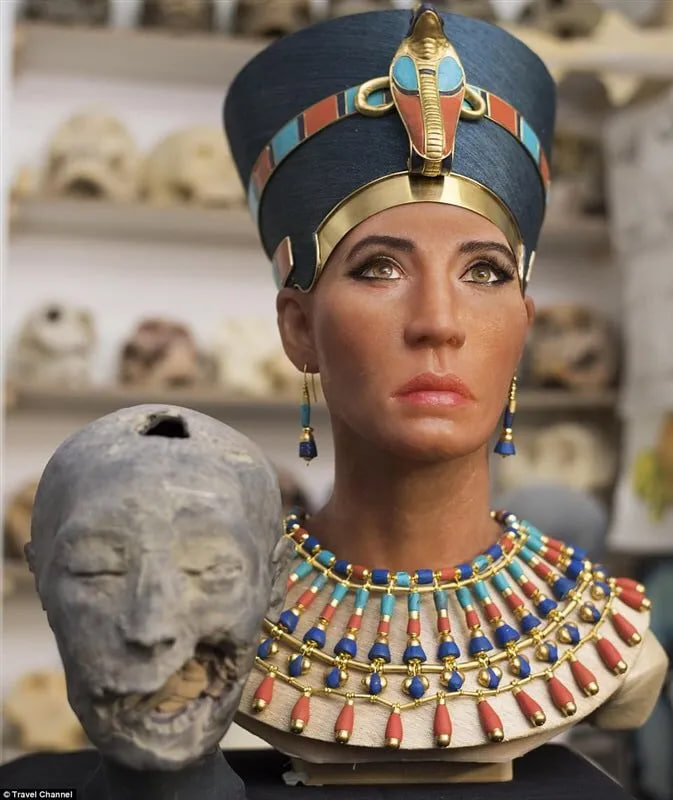
It must be noted that the media did go wild in declaring the likeness to be that of Nefertiti.
This was in part due to the way in which the television show decided to present the likeness, by dressing her up in the famous Nefertiti-esque regalia, and also in part due to the theory that The Younger Lady is in fact Nefertiti.
For a long while some esteemed scholars, such as Joanne Fletcher truly believed with good intentions that The Younger Lady may have been Nefertiti herself, but as time rolls by, such a theory has never been proven and due to modern evidences, the likelihood of The Younger Lady being Nefertiti is extremely slim.
